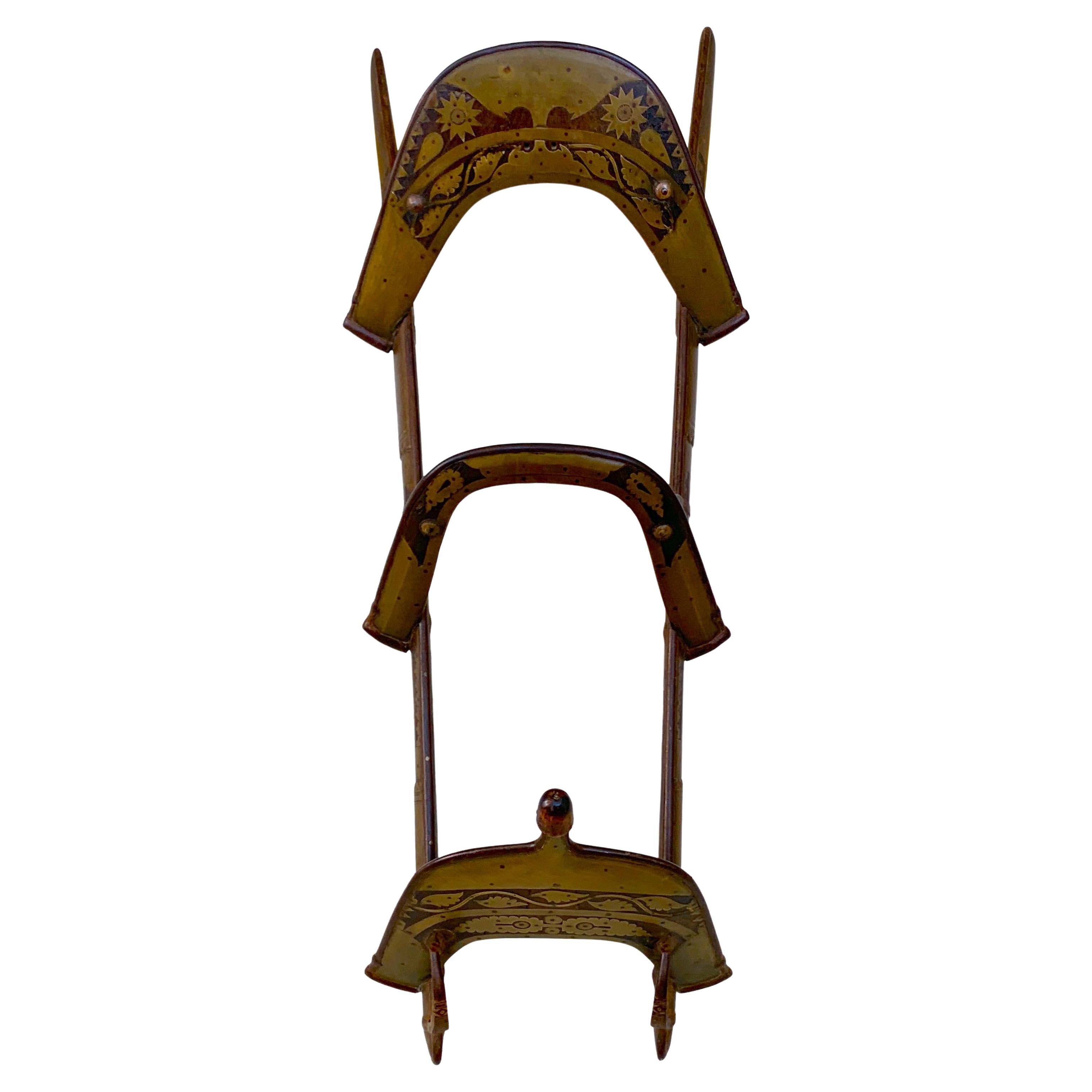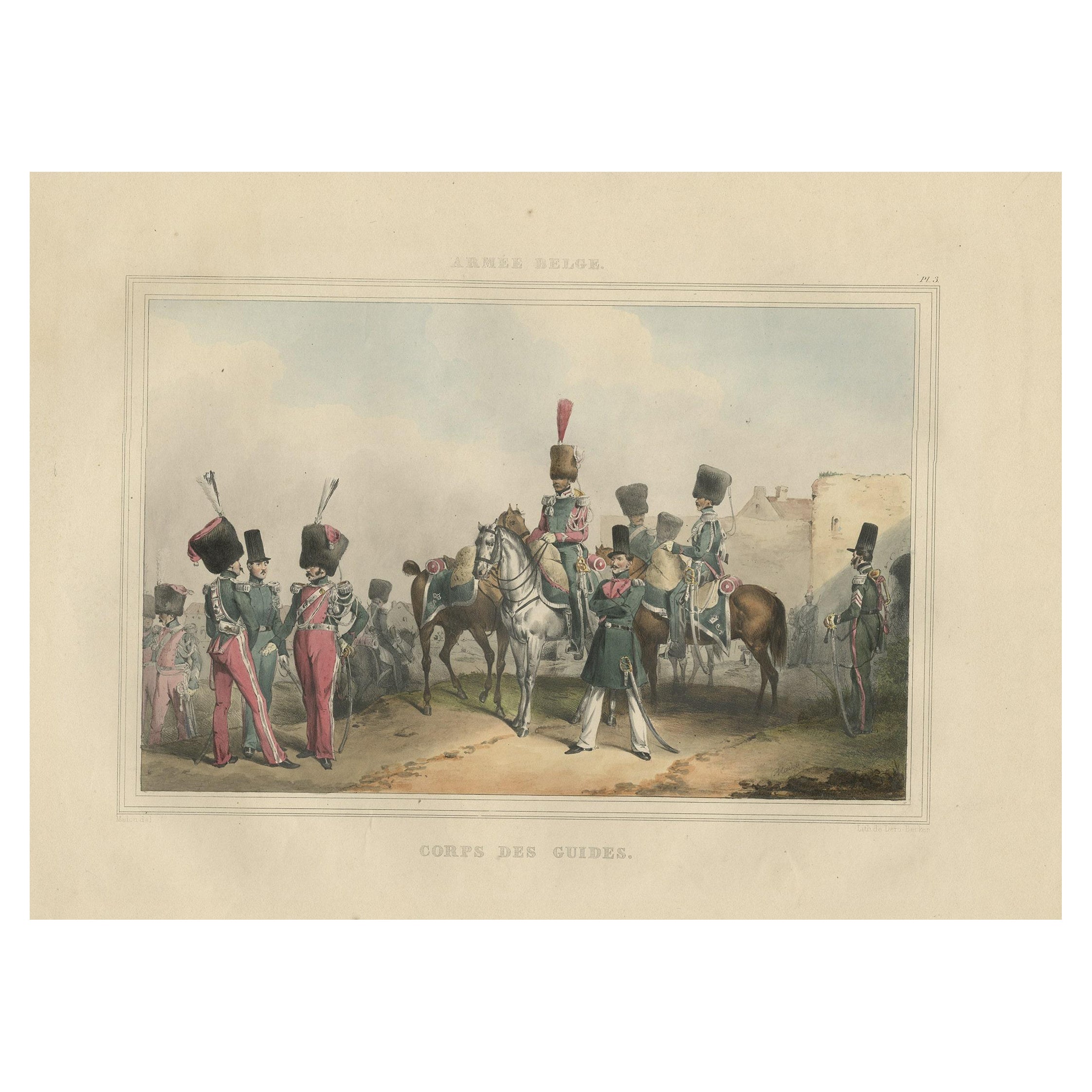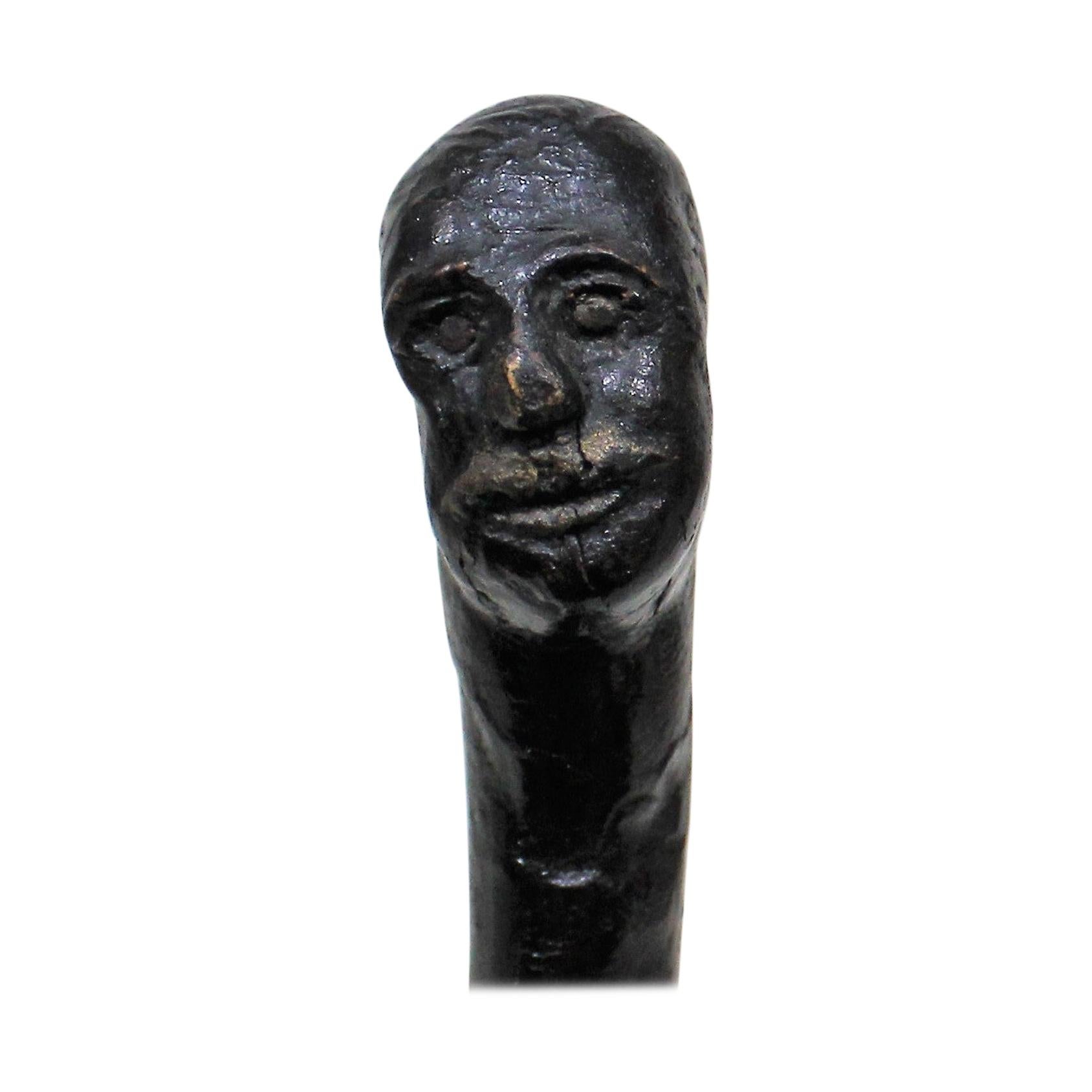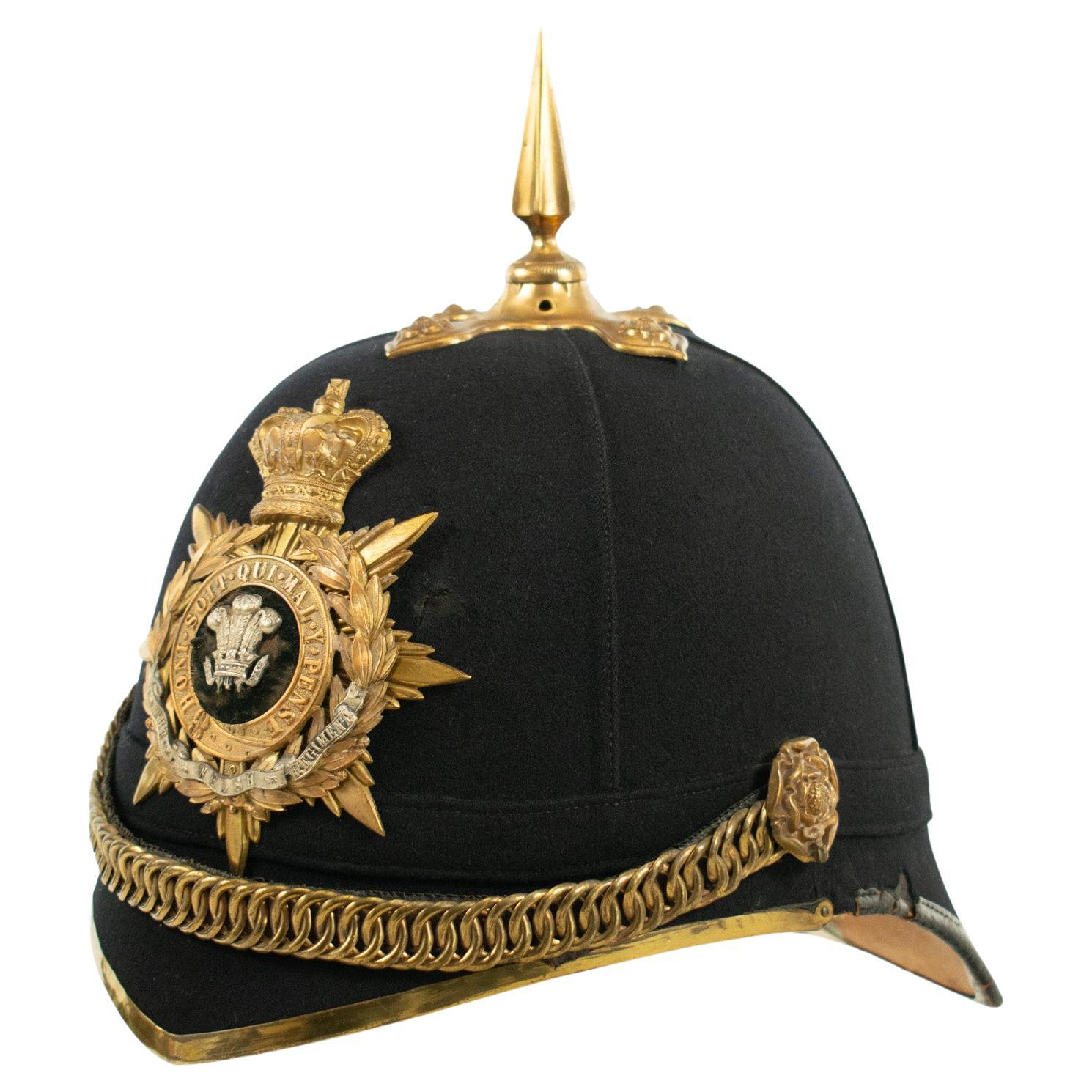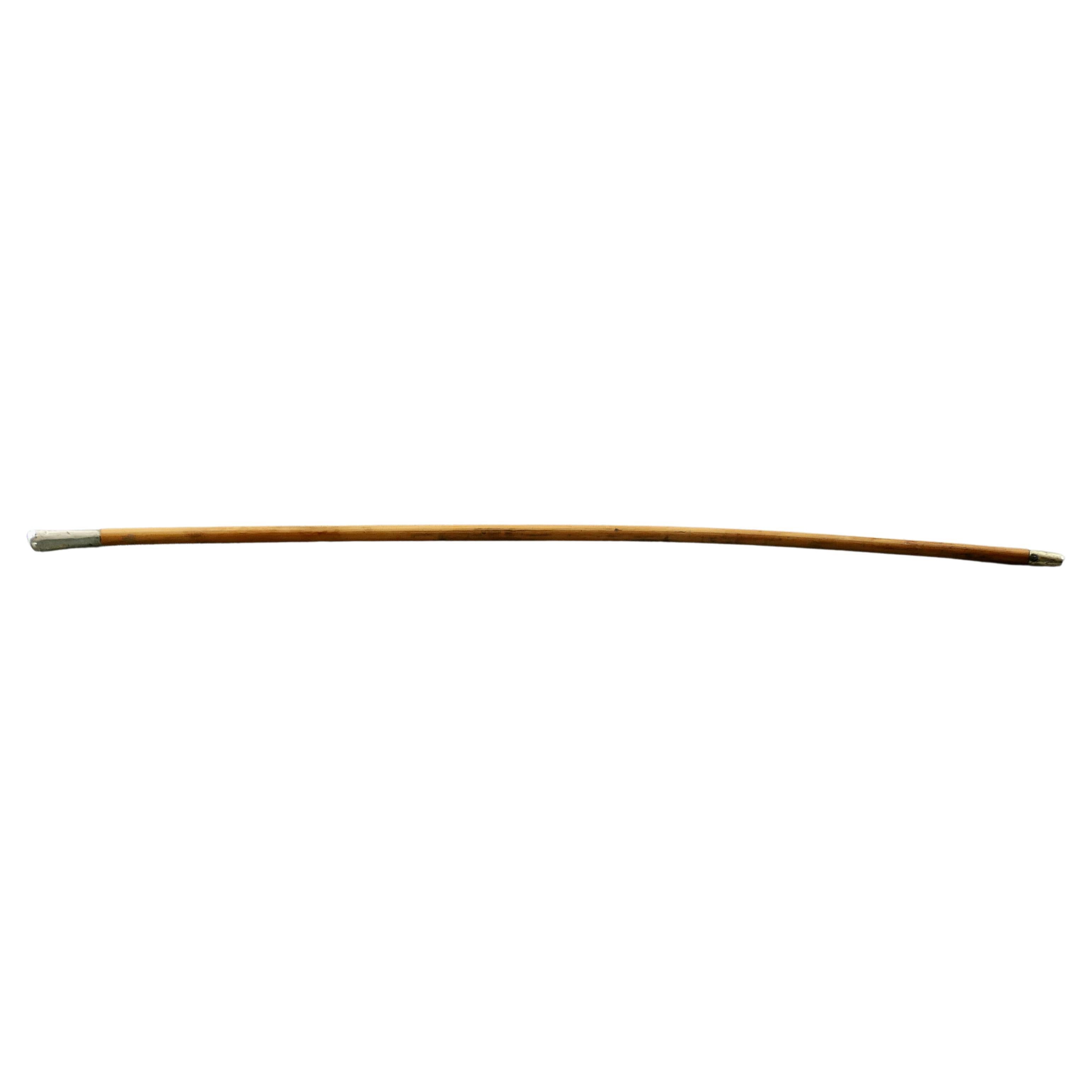Items Similar to Regiment Des Dromedaires Camel Saddle
Want more images or videos?
Request additional images or videos from the seller
Regiment Des Dromedaires Camel Saddle
About the Item
This fascinating piece of military history is a camel saddle created for and used by the Dromedary Regiment (Regiment des Dromedaires) during Napoleon’s Egyptian campaigns between 1798-1801. The term “dromedary” refers to the dromedary camel, better known as the Arabian camel that features a single hump on its back. This saddle is perfectly suited to fit snuggly around the hump and secure two soldiers upon the camel’s back. The wooden saddle bears iron reinforcements and brass mountings with openwork underlain with silver. The dromedary camel proved to be a vital asset for Napoleon’s military campaign, due to the fact the animal is well adapted to life in desert, able to transport a large amounts of cargo and is highly intelligent and easily managed. Specialized equipment such as this saddle was needed to properly outfit the camels for military use. The Regiment des Dromedaires was created upon the onset of Napoleon’s arrival in Egypt in January, 1798. These soldiers were hand-selected infantrymen who actually fought dismounted,
circa 1800
Measures: 51” length.
- Dimensions:Height: 13.5 in (34.29 cm)Width: 18.5 in (46.99 cm)Depth: 51 in (129.54 cm)
- Style:Empire (In the Style Of)
- Materials and Techniques:
- Place of Origin:
- Period:
- Date of Manufacture:circa 1800
- Condition:
- Seller Location:New Orleans, LA
- Reference Number:
About the Seller
5.0
Recognized Seller
These prestigious sellers are industry leaders and represent the highest echelon for item quality and design.
Established in 1912
1stDibs seller since 2010
93 sales on 1stDibs
Typical response time: 6 hours
- ShippingRetrieving quote...Ships From: New Orleans, LA
- Return PolicyA return for this item may be initiated within 7 days of delivery.
More From This SellerView All
- 19th Century Watch Winding Display CabinetLocated in New Orleans, LAThis incredible, one-of-a-kind watch display cabinet brings together the beauty of an antique with the functionality of modern technology. Crafted of mahogany, this 19th century jewelry display cabinet...Category
Antique 19th Century Unknown Empire Cabinets
MaterialsMahogany
- French Nécessaire de VoyageLocated in New Orleans, LAThis exceptional and rare French nécessaire de voyage is almost certainly the work of the highly respected Parisian manufacturer Pierre-Dominique ...Category
Antique Early 19th Century French Empire Historical Memorabilia
MaterialsCrystal, Silver
- Napoléon's Footbath by George BullockBy George BullockLocated in New Orleans, LAThis amazing footbath was created for Napoleon Bonaparte. It was part of the toilet service to be used during his exile on St. Helena. Just before shipm...Category
Antique Early 19th Century English Empire Historical Memorabilia
MaterialsPorcelain
- Portable Copying Machine by James Watt & Co.By James WattLocated in New Orleans, LAConsidered the first step into the world of modern photocopying, the copying machine was among the first widely used devices to successfully produce an ex...Category
Antique 18th Century English Other Historical Memorabilia
MaterialsMahogany
- 19th Century Exhibition Model of Expanding Table by Samuel HawkinsBy Samuel HawkinsLocated in New Orleans, LAA masterpiece of both cabinetmaking and mechanical engineering, this one-of-a-kind expanding table was crafted by the renowned cabinetmaker Samuel Hawkins of London for the Great Exhibition of 1851. Diminutive in size, the fascinating table was designed as a model to demonstrate Hawkins’ innovative patent screw movement to visitors of the Exhibition – six million people in total over five months. It was exhibited again a century later at the Victoria & Albert Museum during the Festival of Britain, an event intended “to symbolise two main qualities of the national character: realism and strength on the one hand, and, on the other, independence and imagination” (Catalogue of the Exhibition, 1951, p.117). To this day, the miniature masterpiece demonstrates the quest of English furniture makers to combine technical innovation with superb craftsmanship. Displaying exceptional ingenuity, Hawkins’ wind-out screw mechanism allowed one to extend the table’s base to accommodate concentric leaves with the simple crank of a handle. It is based on the inventive expanding table originally designed by Robert Jupe in 1835, which used a swivel mechanism to separate sections of the tabletop and allow for segmented leaves to be inserted. Hawkins’ tabletop, on the other hand, extends outwards directly from the center in order to accommodate additional leaves around its diameter. This unique design allowed the mechanism to also smoothly operate on rectangular tables, which could be wound out from the middle to allow for more table space. Hawkins was not alone in his endeavor to combine the technical merits of engineering and mechanics with the most artful pursuit of cabinetmaking. The first half of the 19th century saw a prolific increase in the popularity of applying new ideas to traditional furniture principles, which allowed furniture to serve many purposes. The resulting “patent” furniture was practical and refined, though few were as innovative as Hawkins’ prodigious design. Carved with the year of the Exhibition on the beautifully designed pedestal base, the table is a testament to the significance of this innovation. The model is mentioned in detail in the catalog of the Great Exhibition of 1851, the first international exhibition of industry, manufacturing, and science. Held at London’s dazzling Crystal Palace, its visitors were treated to exhibits from around the globe, including feats of engineering, innovations in industry, and marvels of design. Queen Victoria herself was a frequent visitor, along with her husband, Prince Albert, and others including Charlotte...Category
Antique 19th Century English Other Tables
MaterialsMahogany
- Bavarian Pharmacy BalanceLocated in New Orleans, LAThis amazing and extremely rare Bavarian Biedermeier-period pharmacy balance stand would have been at home at any apothecary’s shop during the mid-19th century. Crafted of walnut with bold giltwood accents, this stand holds eight separate sets of balances with brass beams and pointers, and weighing pans made of Horn, brass and porcelain. The balances measure out varying sizes; the largest is capable of measuring up to 500 grams, while smallest weighs up to 5 grams. Such balances would have been essential tools in the practice of compounding, or creating customized medications to suit a specific patient's needs. The delicate porcelain scales even indicate what they were used to weigh: one set is marked “Jodoform,” or iodoform, a disinfectant and antiseptic once used to treat wounds, and the other is marked “Venena,” which is Latin for “poisons.” Each scale also exhibits stamps indicating that they have been tested for accuracy. It is extremely rare to find such a large array of scales, especially those in such wonderful condition, in one collection. This intriguing piece is a must for any medical antiques enthusiast. The units of measurement in which apothecaries worked were often minute: grains, scruples, drams and ounces. As they were typically used to measure very small amounts of ingredients, apothecary and analytical balances...Category
Antique 19th Century Balkan Biedermeier Scientific Instruments
MaterialsBrass
You May Also Like
- Saudi Arabian Camel Saddle with Camel WhipLocated in Dallas, TXPRESENTING a rare Saudi Arabian Camel Saddle with it’s camel whip. A real conversation piece from the mid-20th Century, circa 1960-1980. Made of oli...Category
20th Century Saudi Arabian Islamic Chairs
MaterialsBrass
- Moorish Brass Inlaid Camel Saddle /Towel RackLocated in West Palm Beach, FLMoorish Brass inlaid camel saddle /towel rack The finest example, heavily inlaid with brass, possibly originally an officers or wealthy persons saddle. Can be easily mounted and ...Category
Antique 19th Century Moroccan Moorish Shelves and Wall Cabinets
MaterialsBrass, Iron
- Rare Print of the 'Corps Des Guides' of the Belgium Army Regiment, 1833Located in Langweer, NLOne nicely hand coloured print of an original serie of 23 plates, showing officers and soldiers resting near a village. published in 1833. Rare. From a serie of beautiful lithographed plates with Belgian military...Category
Antique 1830s Arms, Armor and Weapons
MaterialsPaper
- "The Kent Regiment" Folk Art Walking Stick CaneLocated in Hamilton, OntarioWorld War Two era Folk Art carved walking stick with figural head, twigspur shaft and The Kent Regiment ferrule bearing the Latin motto "Usque Ad ...Category
20th Century Canadian Sports Equipment and Memorabilia
MaterialsWood
- Victorian HOME SERVICE HELMET of the WELSH REGIMENTLocated in TEYJAT, FRVICTORIAN HOME SERVICE HELMET OF THE WELSH REGIMENT - retailed by T McBride & Sons, 17 Charles Street, London, SW of dark blue felt over cork body, with large fire gilded plate with...Category
Antique Late 19th Century British Arms, Armor and Weapons
MaterialsFelt, Cork
- Swagger Stick from The Queen’s Own Royal West Kent RegimentLocated in Chillerton, Isle of WightSwagger Stick from The Queen’s Own Royal West Kent Regiment Superb vintage Military swagger stick The Queen’s Own Royal West Kent Regiment Malacca cane. The cane has slight curve ...Category
Vintage 1920s Art Deco Arms, Armor and Weapons
MaterialsCane

